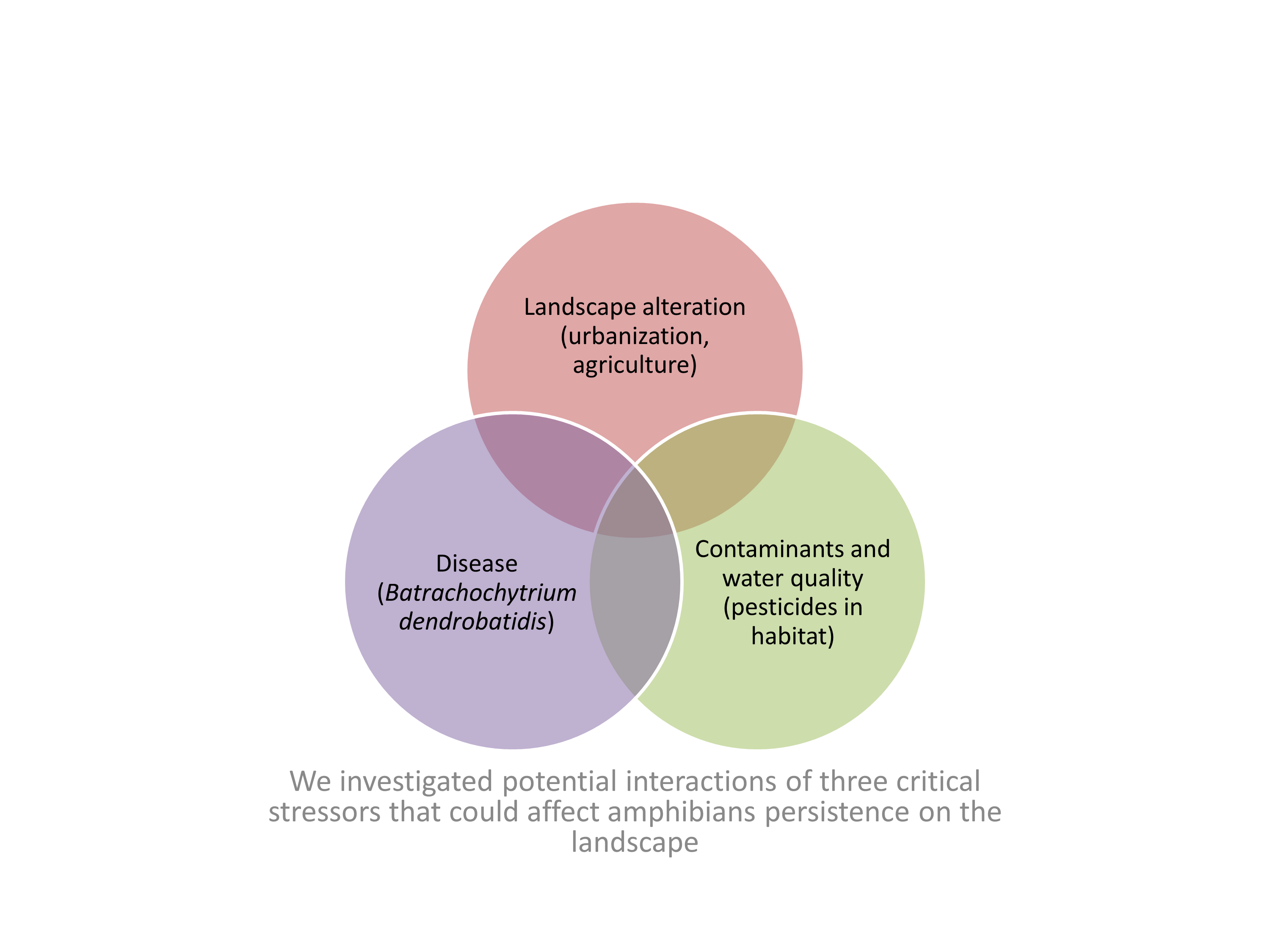Potential Interactions Among Disease, Pesticides, Water Quality and Adjacent Land Cover in Amphibian Habitats in the United States
Abstract/Summary
To investigate interactions among disease, pesticides, water quality and adjacent land cover we collected samples of water, sediment, and frog tissue from 21 sites in 7 States in the United States (US) representing a variety of amphibian habitats. All samples were analyzed for > 90 pesticides and pesticide degradates, and water and frogs were screened for the amphibian chytrid fungus Batrachochytrium dendrobatidis (Bd) using molecular methods. Pesticides and pesticide degradates were detected frequently in frog breeding habitats (water and sediment) as well as in frog tissue. Fungicides occurred more frequently in water, sediment, and tissue than was expected based upon their limited use relative to herbicides or insecticides. Pesticide occurrence in water or sediment was not a strong predictor of occurrence in tissue, but pesticide concentrations in tissue were correlated positively to agricultural and urban land, and negatively to forested land in 2-kilometer buffers around the sites. Bd was detected in water at 45% of sites, and on 34% of swabbed frogs. Bd detections in water were not associated with differences in land use around sites, but sites with detections had colder water. Frogs that tested positive for Bd were associated with sites that had higher total fungicide concentrations in water and sediment, but lower insecticide concentrations in sediments relative to frogs that were Bd negative. Bd concentrations on frog swabs were positively correlated to dissolved organic carbon, and total nitrogen and phosphorus, and negatively correlated to pH and water temperature.
Data were collected from a range of locations and amphibian habitats and represent some of the first field-collected information aimed at understanding the interactions between pesticides, land use, and amphibian disease. These interactions are of particular interest to conservation efforts as many amphibians live in altered habitats and may depend on wetlands embedded in these landscapes to survive.
Publication details
| Published Date: | 2016-05-24 |
| Outlet/Publisher: | Science of the Total Environment 320-332 |
| Media Format: |
ARMI Organizational Units:
Rocky Mountains, Southern - BiologyRocky Mountains - Water
Southeast - Water
Northeast - Water
Topics:
DiseaseStressors
Water
Place Names:
United StatesKeywords:
amphibianschytrid fungus
land cover/land use
pesticides
stressors
surface water

